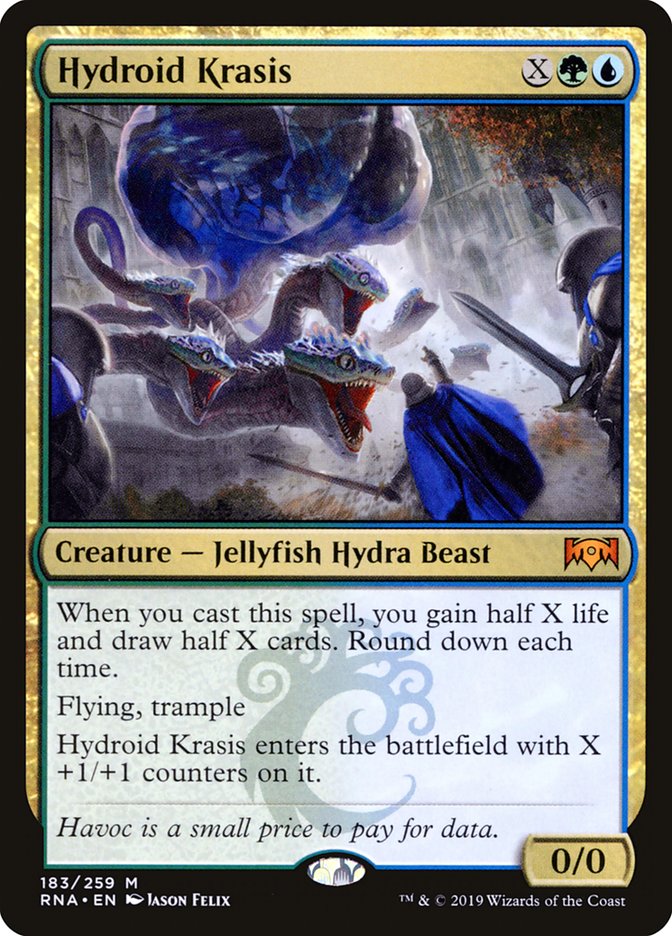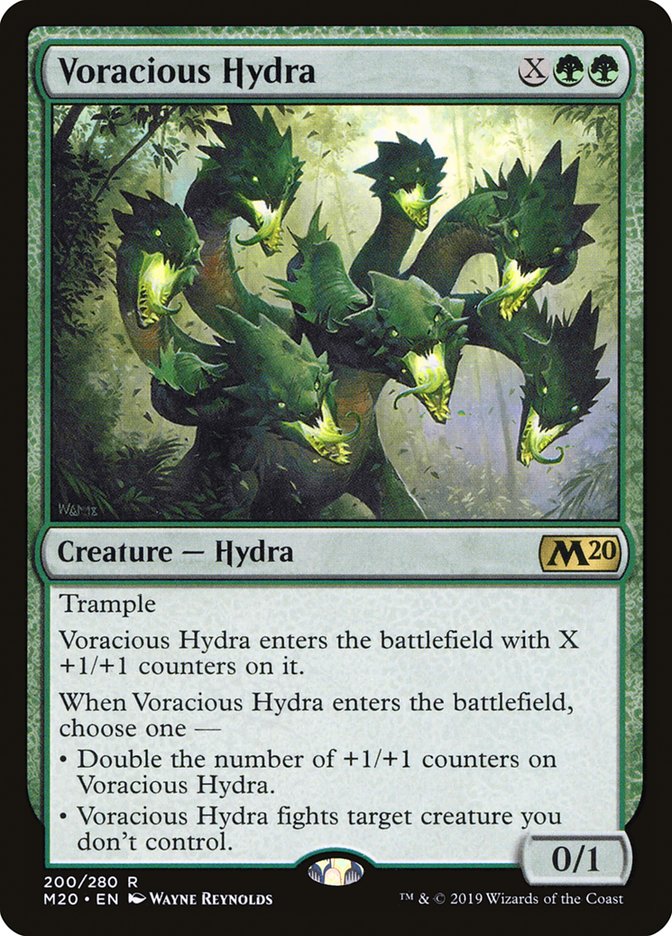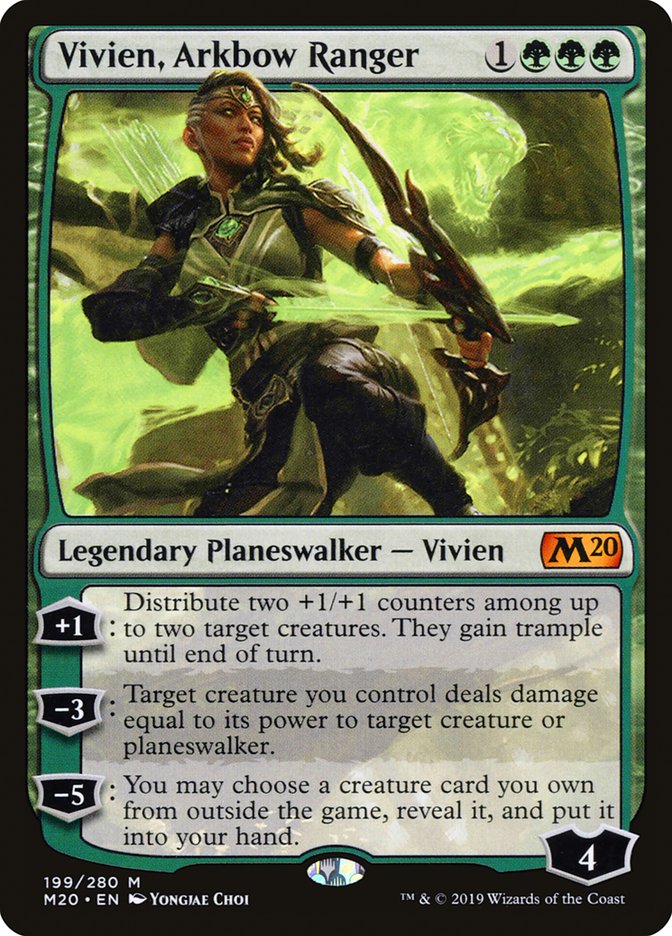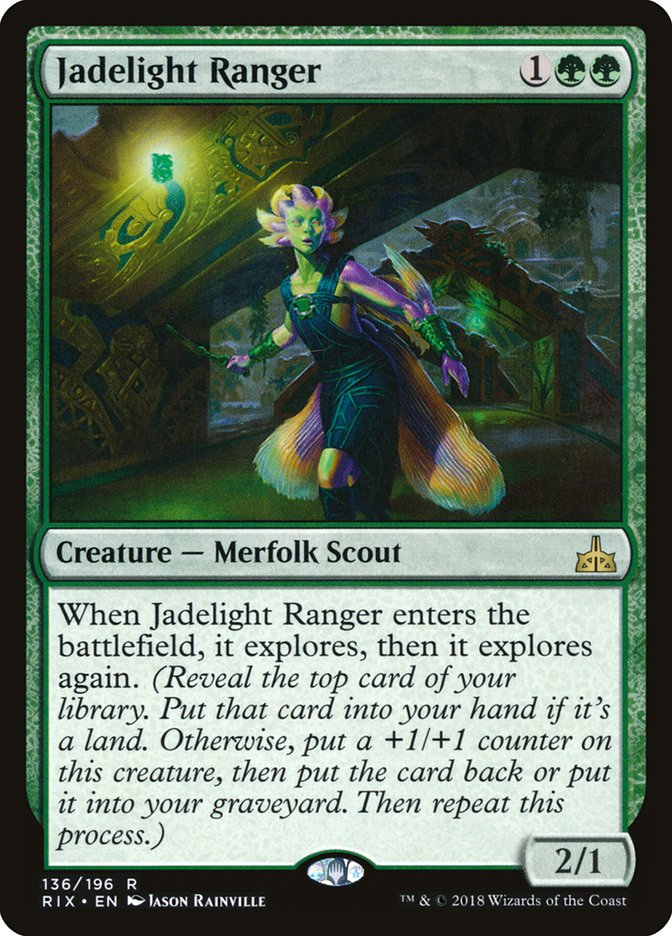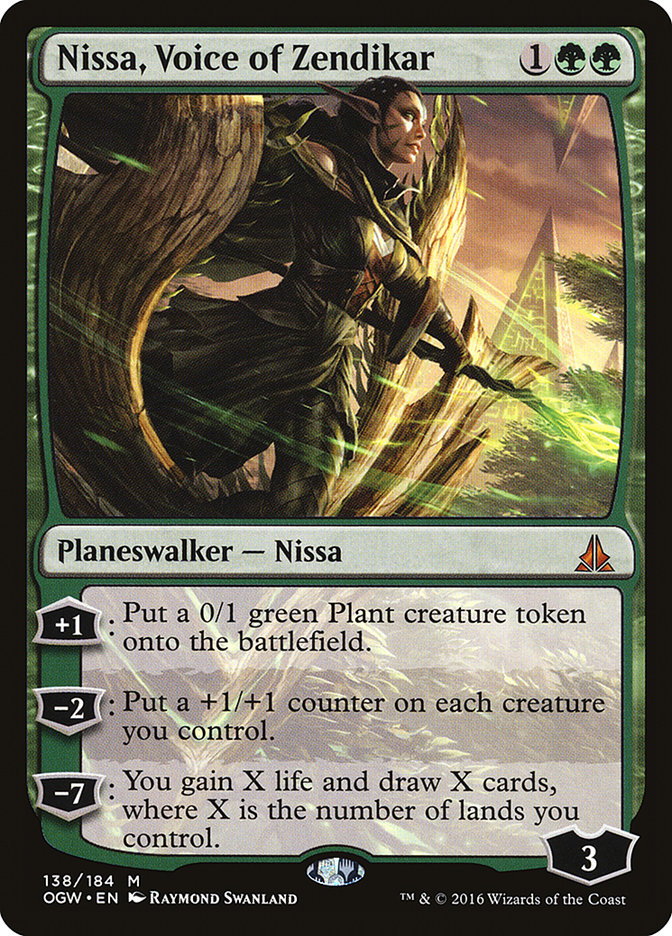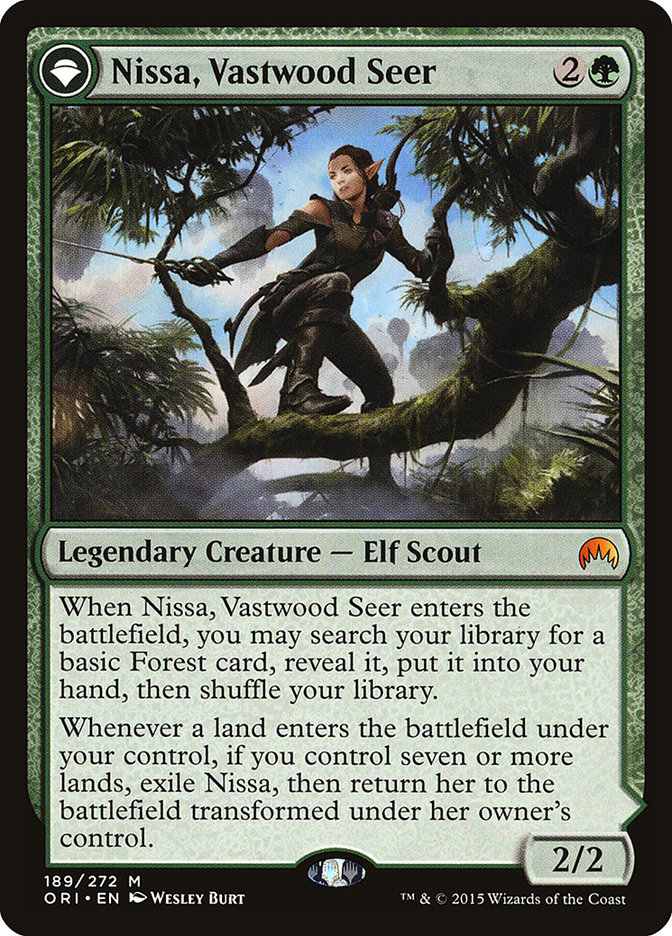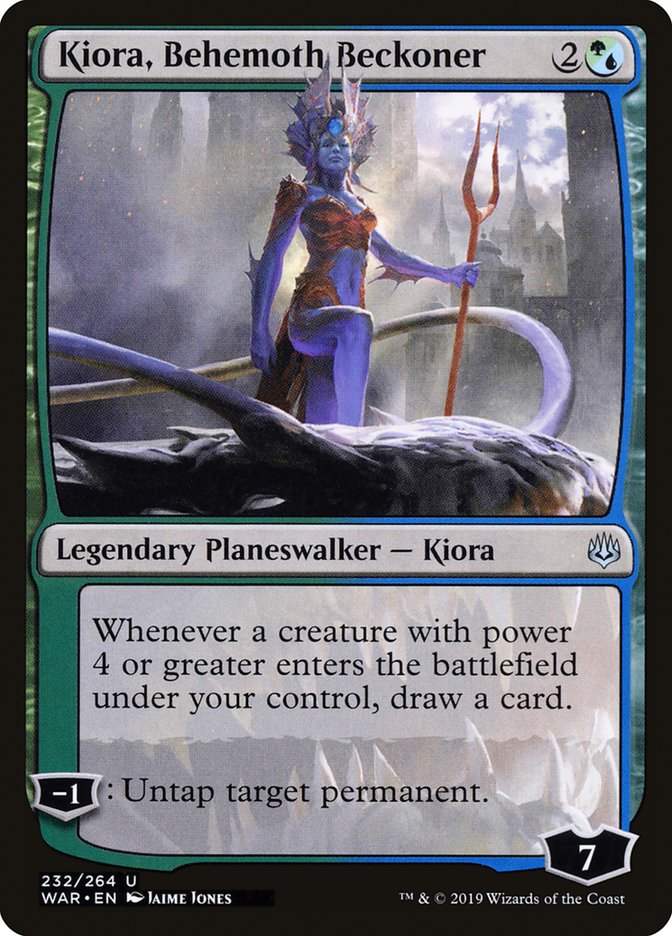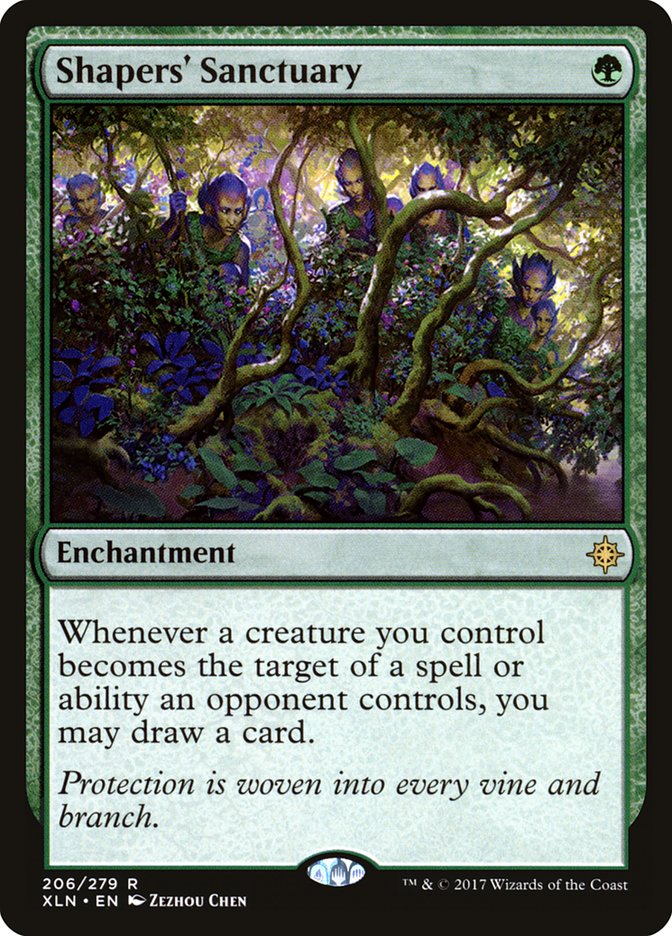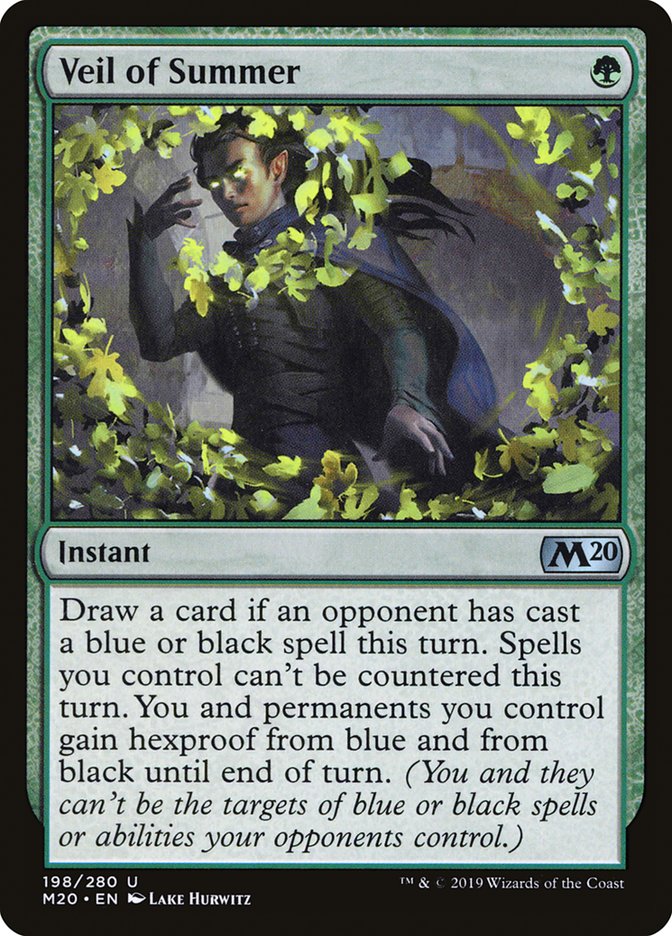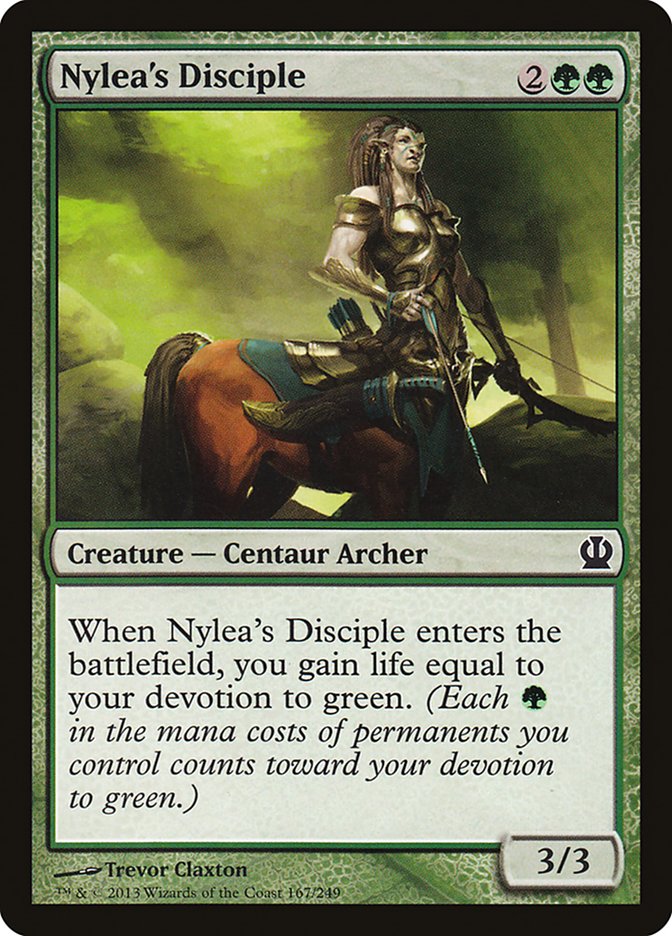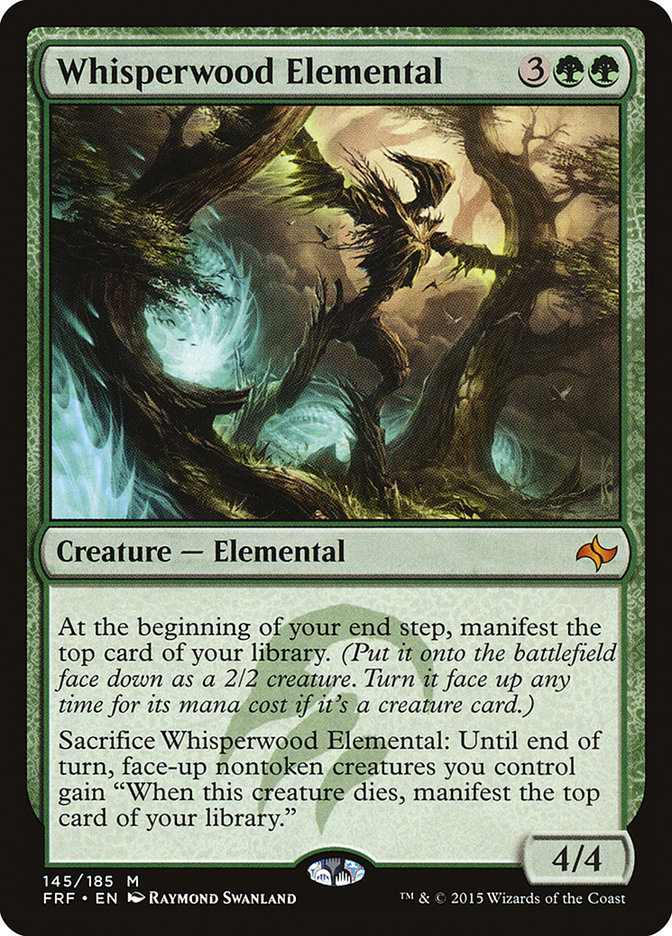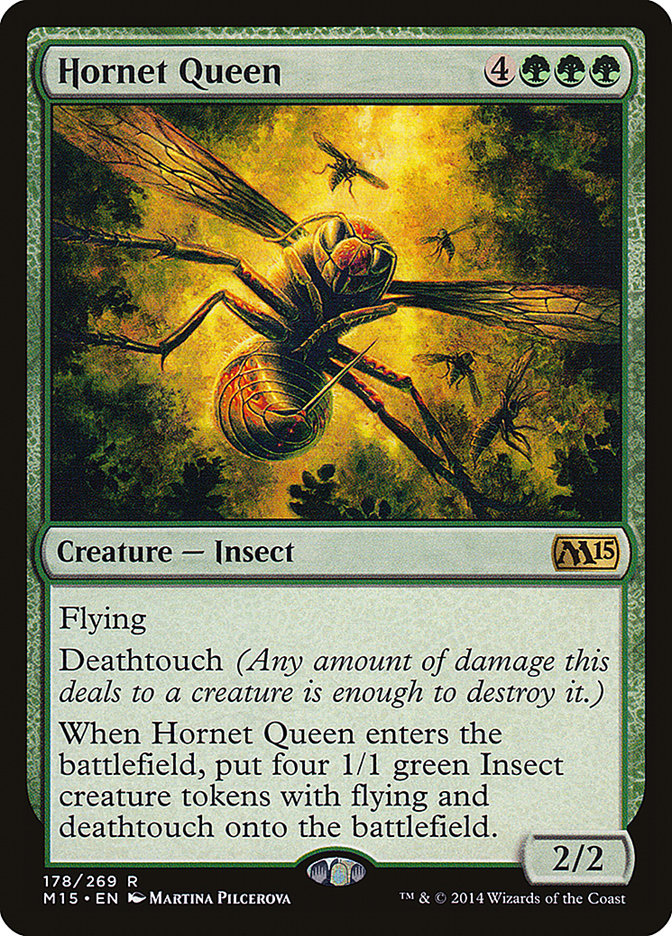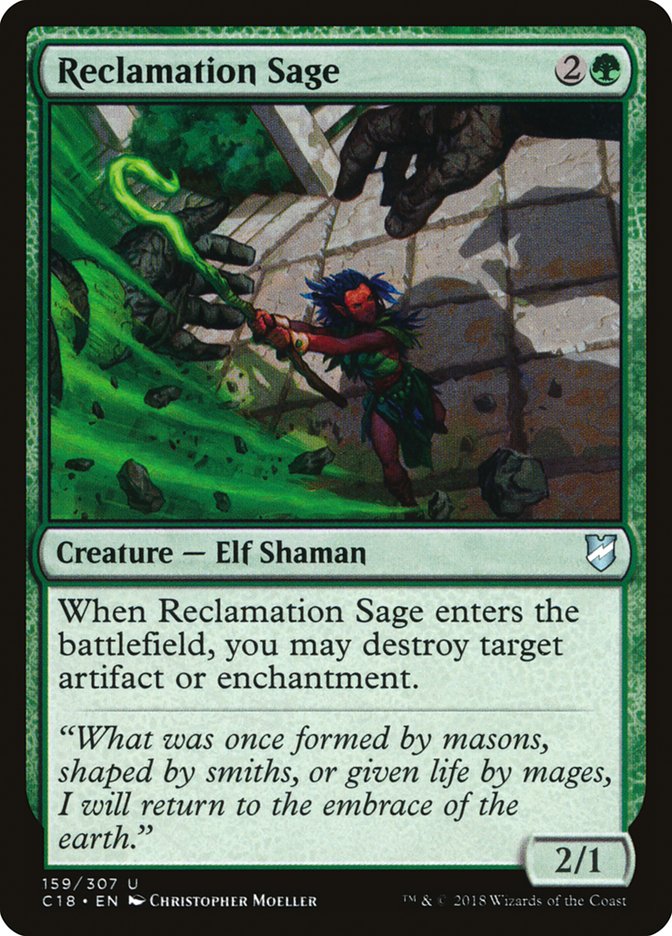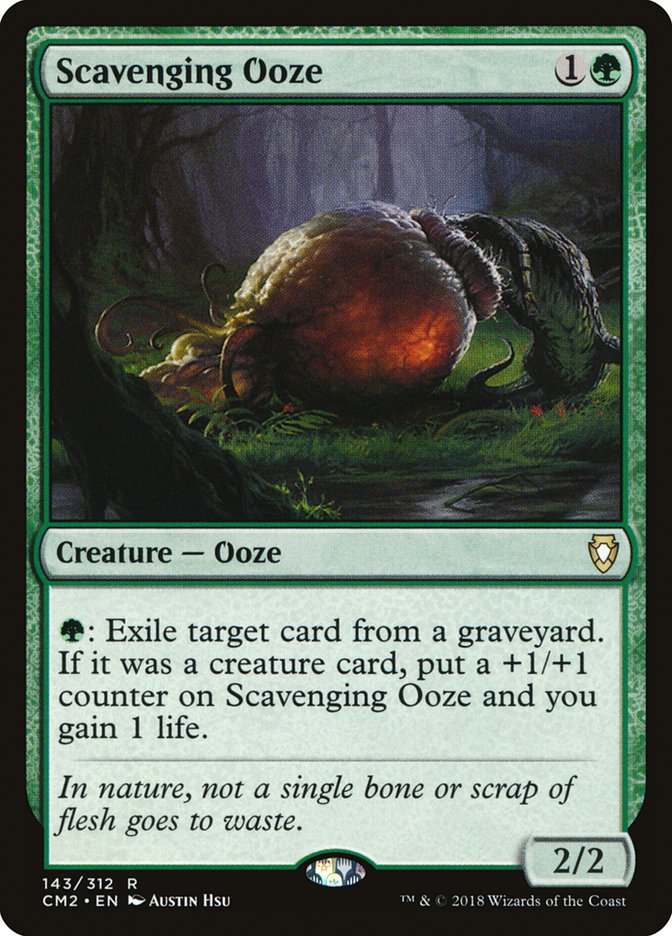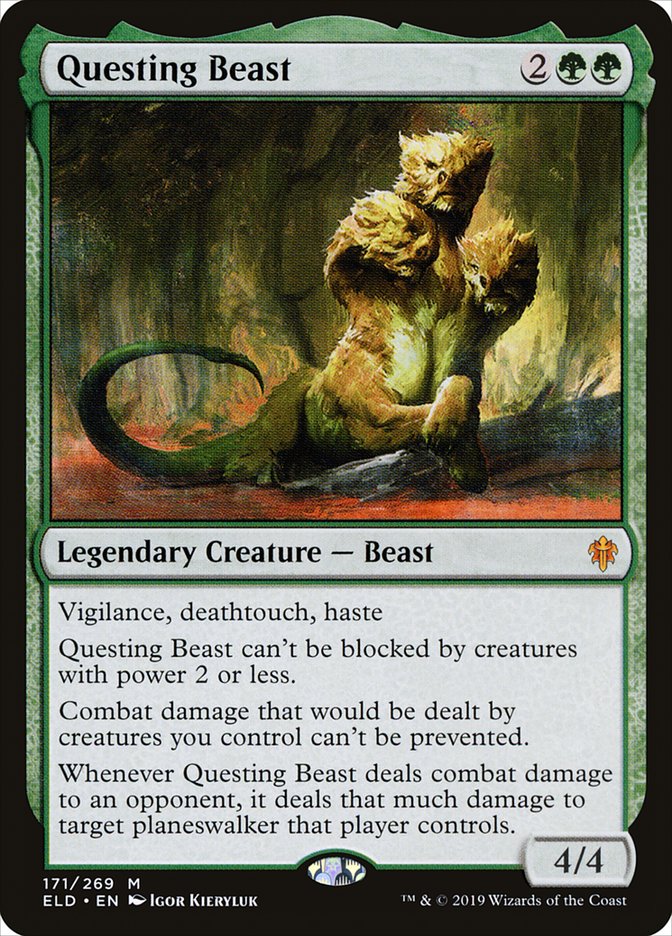If you
want to win the first Pioneer PTQ tomorrow on @MagicOnline,
which is open for all to join for 30 tix entry, read this article. #scgpremiumhttps://t.co/YQtIfhU5Oz—
Tad Flanderson (@strong_sad) October
31, 2019
My
article from last week
outlined my preparation and testing in my favorite Pioneer archetype: Green
Devotion. And while the eventual winner did not exactly copy/paste my list,
the person who got second place seemed to be paying attention…
Oh, right. It was me!
Creatures (22)
- 4 Llanowar Elves
- 4 Burning-Tree Emissary
- 4 Elvish Mystic
- 2 Courser of Kruphix
- 4 Walking Ballista
- 4 Voracious Hydra
Planeswalkers (6)
Lands (20)
Spells (12)

I won twelve matches in a row to make it into the finals. I was the only
undefeated person after the swiss. Every single card choice I made seemed
to be perfect, and my deck felt unbelievable. There was just one problem:
I’ve never beaten Simic Nexus in my life.
But how did I get to the above list? Why did I choose the cards I played?
And what the heck is that sideboard? Today’s article will reflect on my
tournament preparation and go over why I chose the cards I did. I had so
many questions from folks during the tournament stream asking why I wasn’t
splashing for Hydroid Krasis or what Whisperwood Elemental was good
against. To find out the answers to those questions and a whole lot more,
look no further.
Splash Damage
My
article from last week
, which I recommend reading before continuing, breaks down the red and blue
splashes. Blue is mainly for Hydroid Krasis, as I found Oko, Thief of
Crowns to be surprisingly bad in the archetype. That leads me to believe
that Oko, Thief of Crowns is stellar when you’re trying to interact with
the opponent, but relatively tame in a deck designed to go way over the
top. Hydroid Krasis is a different animal entirely, so let’s get down to
why I’m not splashing for it, even though I find it to be the best payoff
among the cards we have available.
Of all the payoff cards you can play in this archetype, Hydroid Krasis is
the one that feels the best when all things are going great. If you have a
ton of mana, there are fewer better feelings than drawing a bunch of cards
and gaining life while creating a giant, flying Jellyfish Hydra Beast. And
it’s a card that doesn’t really care much if you get hit with Supreme
Verdict afterwards, because you’ve already refreshed all those lost
resources.
Because of how the manabases work in Pioneer, splashing a color isn’t free.
It isn’t that hard, but there will be plenty of spots where you falter
because of your splash. Not being able to cast your spell because you don’t
have the required colors is usually game over on the spot. You will often
draw Hydroid Krasis without blue mana OR deal yourself some damage with
Breeding Pool in a matchup where you can’t afford it. You also play fewer
actual Forest, which makes Nissa, Who Shakes the World a bit worse and keeps you from being able to play Castle Garenbrig.
Magic is also a two-player game, and it’s important that your payoff cards
are versatile and/or have the ability to interact. And that’s what I want
to stress: utility at all points in the game. Payoff cards that provide you
with some utility in the early turns are exactly what you want. That’s what
drew me to Walking Ballista. I cast Walking Ballista for X=1 quite a bit in
this deck just to kill one of their early creatures, because that usually
buys you enough time to hit your stride.
This is also the reason I chose Voracious Hydra.
This Standard all-star has been one of my favorite additions to the
archetype. I’ve cast it at virtually every casting cost, using it to fight
Llanowar Elves or just make a 4/5 body. I’ve even cast it for X=0 just to
add two pips of devotion for the next turn’s Nykthos activation. When I say
versatility, I mean exactly that. Voracious Hydra is often your best draw
because it’s so good at so many points in the game. Even when your opponent
has a dry battlefield, you can still just make a huge monster. Sometimes
that’s good enough, and especially so when a large portion of the format’s
removal is red based.
Voracious Hydra is the reason to be Mono-Green, but it should likely be in
every build of devotion. I just found Mono-Green to be the most consistent,
and I don’t know if you can afford to play more than eight cards with X in
the casting cost. I chose Walking Ballista and Voracious Hydra due to their
ability to interact and their utility throughout the game. I was rewarded
with twelve straight wins and a finals appearance. I think I chose
correctly.
Finding Vivien
I wasn’t the first person to play Vivien, Arkbow Ranger in Green Devotion,
but a lot of my testing had me wanting to play Ulamog, the Ceaseless Hunger
without having to actually put it in my deck. I saw a lot of different
builds of Green Devotion featuring Ulamog, the Ceaseless Hunger at the top
end, but cards like that are just absolute duds unless you’re already
winning. And in that spot, most big cards or X spells are going to win you
the game. The real trick was figuring out how good Vivien was alongside
Walking Ballista.
Being able to put two counters on a Walking Ballista can mean the different
between winning and losing a match. Not only does it just completely
destroy opponents who are playing creatures, but that extra damage in
combat can close games a full turn faster. If you’re choosing to interact
with your opponent via Walking Ballista and Voracious Hydra, Vivien, Arkbow
Ranger is a great bridge play for this deck.
Turning Burning-Tree Emissary into a real threat to pressure an opposing
planeswalker is phenomenal. And did I mention that there are three pips
added to your devotion count? Oh, and you can use the minus ability to
“bite” an opposing creature or planeswalker, which gives you even more
interaction to help keep stuff like Felidar Guardian or Thing in the Ice in
check. And if you’re thinking the minus ability is dangerous to use because
your opponent might kill your creature in response, just know that people
won’t or can’t leave up open mana in this format. If they do, they fall too
far behind.
As I said earlier, the big draw for playing Vivien, Arkbow Ranger for me
was being able to play an Ulamog without actually having to play Ulamog.
Having a “wish” sideboard in this style of deck is really powerful because
you’re a mono-colored deck, so you don’t naturally have a lot of cards that
are versatile answers to what your opponent is throwing at you. But with
the wish sideboard with Vivien, you can do some really dirty stuff without
having to pack your deck full of inefficient cards.
Ulamog is one of the best payoffs for a deck like this given enough mana,
because it has such a game-ending effect. Exiling two permanents gives you
the ability to catch up in almost any situation. The idea of playing Ulamog
in this archetype is not a flawed one. It’s just that having cards be able
to have text without needing ten mana is important. I think Vivien gives us
the best of both worlds.
Settling for Courser
Courser of Kruphix is the only card in the deck that I found wanting, but
it serves a very important purpose in matchups that aren’t exactly good for
you. It buys you some time against Mono-Red Aggro, and helps you naturally
hit land drops in matchups where your opponent attacks your mana creatures.
The biggest downside to playing Courser of Kruphix is that you don’t have
fetchlands to reset the top of your deck, and you play so few actual lands
that hitting a land off it is actually a bit rarer than you’d think.
I’ve seen some suggestions for changing Courser of Kruphix to something
else. I don’t hate the idea but believe me when I tell you that I’ve been
looking for something better and I haven’t really been impressed.
The best idea so far is probably Jadelight Ranger, as it can get you lands
or make the top of your deck a little better. Like Courser of Kruphix, it
also has two pips for devotion, and can have a reasonably sized body to
attack or block given the right situation. It’s also one of the best follow
ups to a dry Llanowar Elves on the first turn, because it helps set up your
next turn nicely.
Courser of Kruphix does gain some much-needed life in some situations,
blocks more creatures effectively, and has a naturally high toughness to
dodge burn spells. Whether it’s better or worse than Jadelight Ranger is
directly dependent on what you face off against, as Courser of Kruphix is
significantly better against the aggro decks.
I think both of these options are fine. Nissa, Voice of Zendikar pumps your
team when you have a Burning-Tree Emissary draw, while also adding counters
to Walking Ballista. It provides some relief from ground creatures by
providing some chump blockers, and if you get to ultimate the game is most
likely over. There’s a lot to like about Nissa, Voice of Zendikar but you
don’t get as much value out of it here as you do in something like Hardened
Scales.
Nissa, Vastwood Seer is another decent option for a deck like this, though
I don’t get to seven actual lands very often. It only provides one point of
devotion as well, so I think this is likely one of the worst options for
that slot. I doubt Nissa, Vastwood Seer is even better than something like
Elvish Rejuvenator, as it can help dig for your best card: Nykthos, Shrine
to Nyx.
Untapping Nykthos, Shrine to Nyx is a powerful effect that you use with
Nissa, Who Shakes the World quite often. I haven’t tried it yet, but I
think Kiora, Behemoth Beckoner might actually be the card we’ve been
missing. I need to try it out before I give it the stamp of approval, but
the stats and abilities are all relevant. I just wish it had another pip
for devotion!
While you don’t play a bunch of creatures that have four power to draw
cards, you do get to get an extra card or two from the likes of Voracious
Hydra and Walking Ballista. And it’s basically a self-fulfilling prophecy
here because Kiora helps make those creatures bigger, even if you aren’t
untapping Nykthos, Shrine to Nyx. Kiora is a mana accelerator, doesn’t die
to most removal, and leads to some absolutely disgusting draws.
I’ve had some number of Tireless Tracker in multiple iterations, though it
isn’t all that great because it’s vulnerable to Wild Slash and doesn’t give
a significant addition to devotion. Also, because you have a low land
count, you actually aren’t guaranteed to hit the clues every turn. I like
Tireless Tracker in tandem with Courser of Kruphix, but I don’t think you
should play Tireless Tracker instead of Courser.
Welcome to Sanctuary
The sideboard of Green Devotion is actually less important than you might
think. Multiple times throughout the tournament I chose to not sideboard a
single card because I didn’t want to mess with the integrity of my draws.
Courser of Kruphix was the card sided out the most, as it doesn’t help with
your goldfish draws. If your opponent isn’t interacting with you, Courser
of Kruphix isn’t great.
But in matchups where your opponent is going to interact with you, we have
some great tools to help fight them off.
We’re playing Shapers’ Sanctuary over Veil of Summer for a few reasons, but
most notably that we don’t want to leave mana on the table. Being able to
cast your spells proactively is incredibly important in this deck, which
makes Shapers’ Sanctuary ideal. It also just so happens to add to your
devotion count!
Part of the draw of Veil of Summer is also that your opponent can’t counter
your spell. Well, very few decks in Pioneer play counterspells because
there aren’t a lot of good options for two mana, and few people want to
play stuff like Sinister Sabotage or Absorb (though I think both are fine).
I had Veil of Summer in every iteration of this archetype before the PTQ
and it just never impressed me. The first time I cast Shapers’ Sanctuary, I
was sold it was just the better option.
Worse than removal or interaction against a Prowess deck, but still a
hammer to drop on someone throwing burn spells at your dome. Nylea’s
Disciple also has the added benefit of being a life-gain spell with a 3/3
body attached, which is relevant for both pressuring and providing defense
against the aggro decks. It’s the best option at our disposal, but it’s not
even close to a game-ender. It’s especially heinous against opponents who
are correctly playing Rampaging Ferocidon instead of Skullcrack.
This format is all about hitting the battlefield and keeping your
opponent’s battlefield clear. If you don’t contain what they’re doing,
you’re going to lose. Cards like Skullcrack and Boros Charm are lackluster,
if not useless, because they don’t kill Llanowar Elves.
This card was one that a ton of people asked about during the PTQ stream.
Is it worth it? What’s it there for? Has it been any good for you? The
short answer is: Yes, it has been good for me. The long answer is that I
didn’t cast it a single time in the PTQ, so I honestly have no idea if it’s
good enough to justify two copies. I just wanted something to protect me
(proactively) from Supreme Verdict.
Heroic Intervention is also an option but being able to tutor for
Whisperwood Elemental with Vivien, Arkbow Ranger to protect myself from
Supreme Verdict just seemed great. You also want answers to problems that
stick on the battlefield for devotion, and Whisperwood Elemental also
benefits adding a ton of pressure to the battlefield without much
investment. Five is a lot of mana, but it’s certainly good at closing the
door on your opponent in the right situations. In the future, I’ll probably
end up just playing one copy.
This one was only there because I knew Kali would want me to play one. I
never cast it, never wanted to tutor for it with Vivien, but it’s certainly
a wild peel against an opponent trying to play a fair game. The problem is
that getting to seven mana against a fair opponent who’s interacting with
you isn’t always easy and having a Hornet Queen rot in your hand during the
meantime isn’t exactly the best. I will definitely be cutting Hornet Queen
in the future.
Tutored for it to kill Wilderness Reclamation. It was fine. Might play a
second copy.
Likely the most useful sideboard card of the bunch, Scavenging Ooze comes
in against a wide variety of opponents and provides you with some
insulation from any sort of degenerate graveyard deck. And because you have
a ton of mana, you get to eat every card in their graveyard.
I loved the versatility of Scavenging Ooze, acting as a way to contain
Delve, Prized Amalgam, and Arclight Phoenix. It also gives you some much
needed life points against decks like Mono-Red Aggro, since their early
removal will be pointed at your mana creatures. It can get out of burn
range quickly and provides you with a way to close the game in a short
period. I would play four copies before I went to two.
If It Ain’t Broke…
If it ain’t broke, don’t try to fix it. The deck was stellar. I went 12-1,
only losing in the finals to a deck I could never beat with green cards.
I might want to try Questing Beast to help out against Simic Nexus, but one
copy probably won’t change much, and two copies will swallow up some
sideboard space for matchups that you’re more likely to face. I doubt Simic
Nexus will be a popular archetype, as it’s relatively weak to Mono-Red
Aggro, but it might not hurt to have a backdoor out to Fog by just playing
one Questing Beast to find with Vivien, Arkbow Ranger. I do want some haste
creature, and Questing Beast feels like the best of the bunch.
But the rest of the deck felt awesome. 58 of my 60 cards were perfect, but
I still think the Courser of Kruphix slot is flexible. My sideboard was
close to ten or eleven cards on point but could still use a little
tweaking. I haven’t had a chance to play much Magic since the tournament
ended, but I’ll likely have more answers for you in the coming days. It
seems like a lot of people are having success with my list, or close to it.
If you want to see me playing Pioneer, you can check out my stream. I’m
there almost every day, and the last two weeks have been strictly Pioneer.
It feels like a great format so far, and the response from the community
has been exceptional. I’m excited to get to play it at the Season Two
Invitational at SCG CON Winter in a few weeks. If you like ramping and
doing ridiculously powerful stuff in the first three turns, Green Devotion
might be the deck for you! It’s powerful, proactive, and right up my alley.
And now we test to see if we can find something better than Courser of
Kruphix! If you want to see the deck in action, you can check out the VOD
of the PTQ here.


